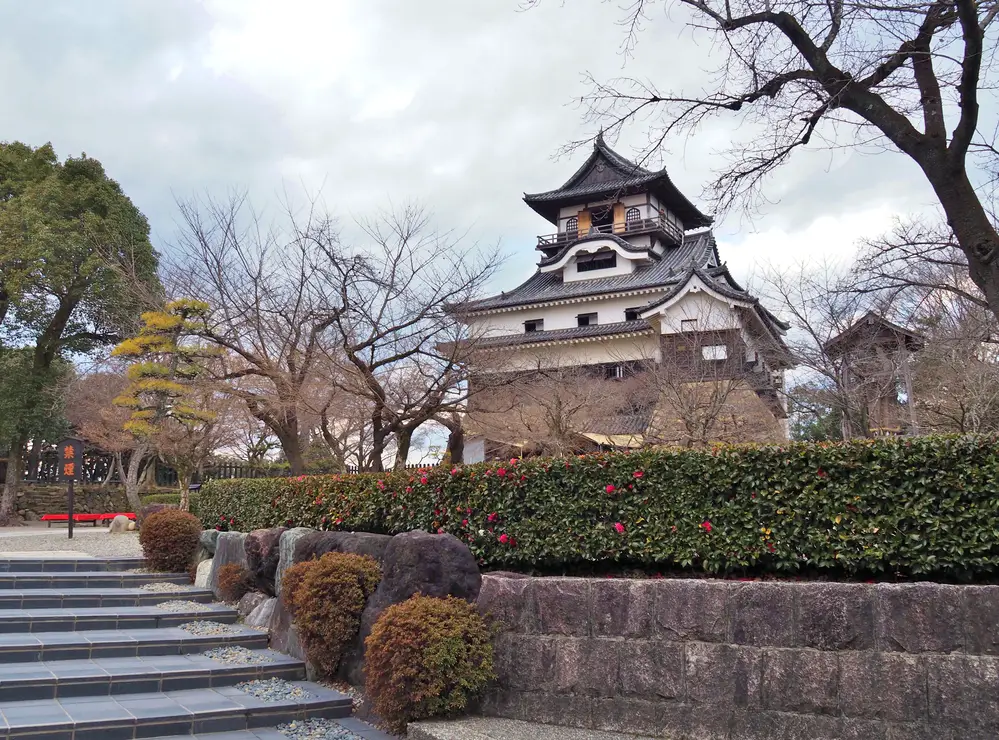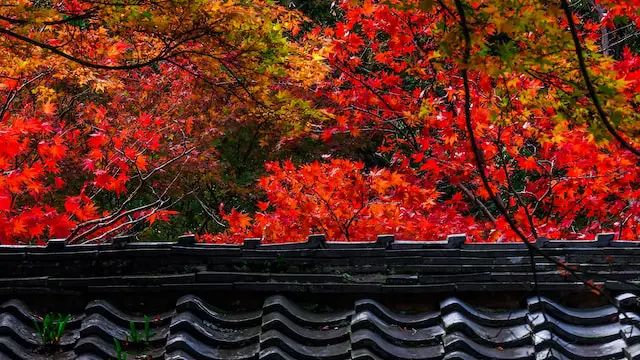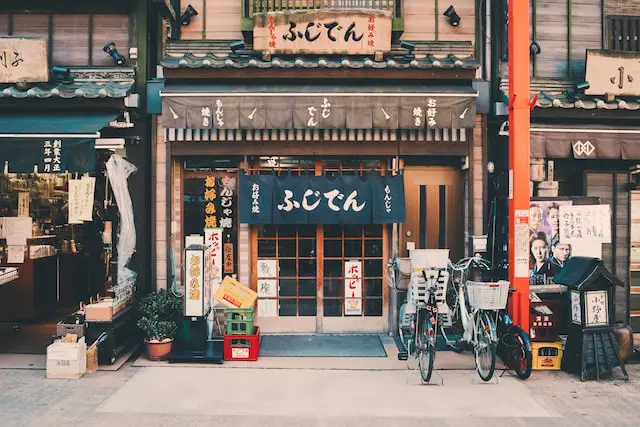Rich in history and bursting with a unique blend of traditional and contemporary elements, Japan offers travelers a timeless journey through ancient artifacts and architectural wonders. The true essence of Japanese culture seeps from every corner of its populous urban cities to its serene countryside.
A quintessential part of this cultural fabric is attributed to ancient Japanese castles, temples, and shrines, standing dutifully as echoes of the past that narrate numerous tales of a mesmerizing historical epoch. Steeped in time-honored traditions, these structures serve more than just an aesthetic purpose. They are tangible reminders of Japan’s rich past and the key to unveiling the layered intricacies of Japan history.
The Significance of Castles in Japan
Join us as we embark on a journey that delves into an enriching exploration of these ornate structures that are essential for any traveler looking to truly experience the heart of Japan’s travel landscape.
Japan’s unique history is richly woven with distinct architecture, and central to this are the magnificent castles that dot its landscape. These bastions of power and prestige serve as silent narrators of Japan’s feudal past, with each lord leaving their mark in the form of these architectural marvels. Be it the Edo period or the times of the Samurai, Japanese castles offer an immersive plunge into Japanese history.
Imposing yet intricate, the architecture of Japanese castles is a marvel in itself. These castles were traditionally constructed using a layout known as “Tenshudai,” with many layers of stone walls and moats for defense. The key feature of any Japanese castle is the central keep (‘Tenshu’), often flanked by multiple smaller towers. Distinctive tiered roofs and white-plastered earthen walls form a fascinating juxtaposition – a symbol of unyielding power wrapped in elegant simplicity.
Famous Japanese castles like Himeji Castle, Osaka Castle, and Matsumoto Castle each tell tales of the clans that ruled, the battles fought, and societies’ evolution. Each castle, with its unique history and architectural features, helps visitors understand the religious, military, and strategic aspects that played essential roles in shaping Japan we know today.
Exploring the corridors of these grand structures offers an unparalleled glimpse into Japan’s feudal era, inextricably tied to its modern-day persona. As you traverse the cobbled pathways and gaze at the mighty moats, you are reminded of the age-old adage that there is much to learn from history. This is particularly true in Japan, a country where the past reverberates eloquently in the present.
The Magnificent Japanese Castles: Himeji Castle, Osaka Castle, and Matsumoto Castle
Welcome to a journey into the heart of Japanese castle history, where we delve into the lives of shoguns, samurais, and ancient architects. Our journey today will cover three of the most exquisite and iconic castles in the land of the rising sun; the Himeji Castle, Osaka Castle, and Matsumoto Castle. Each of these fortresses encapsulates the essence of Japanese castle architecture and are sought-after destinations on any Japan travel itinerary.
Firstly, the Himeji Castle often known as the ‘White Heron Castle’, exudes an ethereal charm with its stark white exterior and intricate design. It’s not only a UNESCO World Heritage site but also Japan’s best-preserved castle, offering a window into the country’s feudal past.
Next stop is the Osaka Castle, nestled within a scenic park surrounded by moats. This castle played a major role in the unification of Japan during the sixteenth century. Its main tower houses treasures and historical artifacts, making it an enticing destination for history buffs.
Lastly, Matsumoto Castle, one of Japan’s oldest castles, mesmerizes visitors with its contrasting black exterior known as “Crow Castle.” Its unique moon viewing turret and connected corridors offer a distinctive warfare strategy while providing stunning views of the city.
Visiting these majestic castles is akin to stepping back in time. You can almost hear the whispered strategies of the samurais resonating within the walls. As we delve further into the riveting stories behind these famous castles in Japan, we gain a deeper appreciation of Japan’s intriguing past.
Exploring Japanese Temples: Blend of Spirituality and Aesthetics
A journey through the historical timeline of Japan would be truly incomplete without delving into the profound essence of its ancient temples. Rich in cultural heritage and spiritual significance, these temples have served as an important backdrop to Japanese history. They function as not just mere places of worship, but as pillars of Japanese culture and society which have stood unchanged through the test of time.
The intriguing and intricately constructed temples of Japan encapsulate an impressive blend of spirituality and aesthetics, carrying a profound architectural charm. The Japanese temple architecture is unique and indicates a deep affinity towards nature and serenity. It gracefully combines robustness with elegance, encapsulated within religious motifs.
Japanese temples can be found nestled amidst lush green forests, on mountains, and in the heart of bustling cities; each echoing tales of a bygone era. They provide sanctuary and peace to their visitors, offering a silent retreat from the frenetic pace of modern life. The tranquility of these temples helps to connect individuals to their inner spirit, making these structures an essential aspect of spirituality in Japan.
Whether it’s the Zen Buddhist temples of Kyoto, the grand “Mountain Temples” of Honshū, or the various city temples that have become urban oases, each offers a unique perspective into the world of Japanese spirituality, discipline, and aesthetic sensibility. These temples help anchor the spiritual life of people in Japan, fostering harmony, peace, and serenity to all who visit them.
Immersing yourself in the soothing ambiance of these revered sites, one can truly experience the essence of Japanese culture, history, and spirituality. So, give yourself a cultural feast and lose yourself in the timeless beauty of these Japanese temples, each waiting to narrate their centuries-old tale.
The fascinating world of Japanese temples generously contributes to Japan’s zealous adherence to spirituality and aesthetics. Lush with a fascinating blend of religious devotion and architectural splendor, these sacred sites form an integral part of Japanese temple history and culture.
Enchanting Temples: Kinkakuji Temple, Todaiji Temple, and Kiyomizudera Temple
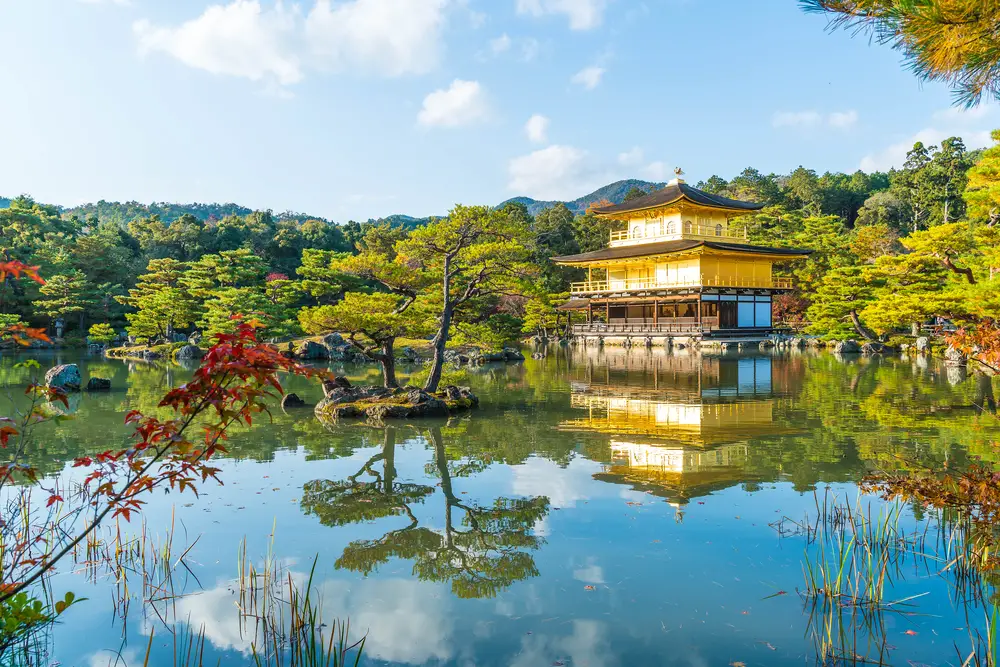
Kinkakuji Temple, more popularly known as the Golden Pavilion, resides in Kyoto. Crafted during the brutal power struggles of the Ashikaga Shogunate, the temple mirrors the era’s aesthetic and religious predilections. Its shimmering sides, coated meticulously with gold leaf, overlooking a tranquil pond illustrates the transient nature of life in accordance with Buddhist teaching.
The Todaiji Temple, situated in the ancient capital of Nara, boasts the record of being home to the world’s largest bronze statue of Buddha (Daibutsu). Founded in the mid-8th century, the temple has withstood numerous wars and natural disasters and serves as a glorious testament to the rich and enduring Japanese temple architecture.
Lastly, perched on the hilly terrains of Eastern Kyoto, the Kiyomizudera Temple offers mesmerizing panoramic views of the city. It gets its name from the sacred Otawa Waterfall running through the complex, whose waters are believed to confer health, longevity, and success in studies. More than its aesthetic appeal, it’s the temple’s harmonious interplay with nature that leaves visitors enchanted.
These iconic temples not only provide a glimpse into the rich tapestry of Japanese culture and spirituality but also serve as excellent architectural exemplars of their respective eras. With fascinating tales woven into their structures, famous temples in Japan offer a transformative experience to their visitors.
The Importance of Shrines in Shinto Beliefs and Japanese Culture
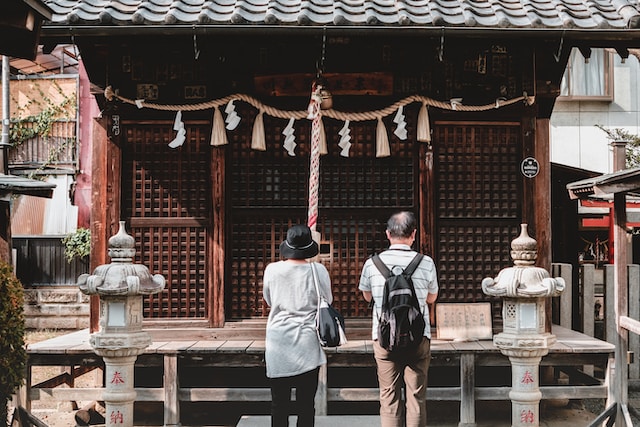
Home to one of the oldest religions in the world, Japan’s intricate web of culture is remarkably tied to Shintoism. At the centre of this belief system rests the iconic Shinto shrines. These sacred structures contribute significantly to Japanese culture and customs by serving as spaces for ritual practices and public festivals.
Situated in picturesque landscapes, these shrines are a testament to the Shinto worship of natural phenomena, and often house ‘Kami’, the Shinto gods. Kami is not confined to a human form, rather it could be an element of the landscape, a rock, a tree, or a mountain. The grand Torii gates, easily recognized by their vermillion color, mark the entrance to these shrines, signifying the crossing from the profane world to the sacred.
Architecture, too, plays a crucial role in the design of Shinto shrines. Built to blend seamlessly with nature, these structures encapsulate the symbiotic relationship between mankind and the environment, a vital tenet of Shintoism. Their consistent design involving primeval materials like wood and thatch is an homage to Japan’s prehistoric times. It reflects the country’s enduring commitment to preserve its legacy.
Of the many revered shrines, the Meiji Shrine, the majestic Itsukushima Shrine, and the captivating Fushimi Inari Taisha Shrine stand out due to their historical importance and cultural significance. Each one, with its unique history and anecdote, contributes a different thread to the vibrant tapestry of Japan’s history and culture. These shrines make us realize that Shintoism is not merely a religion; it is a way of life that harmoniously brings together nature, mankind, and spirituality.
Immersing yourself in the tranquillity of these Shinto shrines promises an experience like no other, a chance to comprehend the depth of Japan Shintoism and the cultural nuances that shape this island nation’s ethos.
Cherished Shrines: Meiji Shrine, Itsukushima Shrine, and Fushimi Inari Taisha Shrine
The land of the rising sun is home to some of the world’s most cherished shrines. Three notable ones include the Meiji Shrine, Itsukushima Shrine, and Fushimi Inari Taisha Shrine. Each of these shrines captivates every visitor with its beauty, story, and cultural legacy and is a fundamental part of Japan Shintoism and Japanese culture and customs.
The Meiji Shrine, located in Shibuya, Tokyo, pays homage to Emperor Meiji and his wife, Empress Shōken. Being surrounded by a lush, tranquil forest, it offers visitors a serene retreat in the heart of the bustling city.
Then on the captivating island of Miyajima, we find the majestic Itsukushima Shrine. Famed for its “floating” torii gate, this famous shrine in Japan seems to rise from the sea during high tide – a sight that is truly mesmerizing.
Last but certainly not least, the enchanting Fushimi Inari Taisha Shrine in Kyoto, is celebrated for its seemingly endless paths of vibrant red torii gates. Dedicated to the Shinto god of rice, it is a symbol of prosperity and success.
To truly immerse yourself in Japan’s history and understanding its spiritual core, a visit to these venerable shrines should be on every traveler’s bucket list. Make sure to carve out time during your Japan travel to explore these marvels. Their rich history and cultural importance promise a deeply meaningful experience.
Understanding The Rituals and Customs in Japanese Castles, Temples, and Shrine
Understanding the rituals and customs tied to Japanese castles, temples, and shrines is vital for tourists angling for a profound cultural experience. Japan is a land where tradition and modernity coexist harmoniously, and nowhere is this harmony more evident than at these historically significant sites, seeped deep in Japanese rituals and traditional customs.
The Japanese castles, once the residence of feudal lords, are often marked with symbolic elements – like the golden sea bream atop Osaka Castle, which was believed to protect the lord from fire accidents. It’s considered respectful to appreciate such elements without touching them.
When visiting the temples, remember to perform the purification ritual, which involves washing your hands and mouth with water at the temple’s entrance. Prayer rituals include throwing a coin into the offertory box followed by ringing the bell, bowing twice, clapping twice, and bowing one final time. Silence and maximum respect are expected when performing these rituals.
Shrines have their own customs. Traditionally, worshippers are required to pass through the Torii gate and walk along the side of the path, as the center is reserved for the Gods. Once approaching the main hall, worshippers pay respect to the deities with a respectful bow.
Understanding these customs and rituals is integral to appreciating your visit to ancient Japan cultural tourism destinations. They allow you to not just see but also partake in the country’s rich and vibrant history. So when you find yourself on the sacred grounds of a Japanese castle, temple, or shrine, remember to act respectfully and immerse yourself in the long-standing traditions that form the backbone of the awe-inspiring Land of the Rising Sun.
How to Visit Japan’s Castles, Temples, and Shrines
A journey to the heart of Japan’s history and culture is not complete without visiting the magnificent castles, serene temples, and enchanting shrines. So, how does one plan the perfect trip to these iconic places while respecting Japanese travel etiquette? Here’s your comprehensive guide.
Firstly, choosing the right time for your visit is crucial. Each season in Japan offers a unique aesthetic, with cherry blossoms in spring, verdant greenery in summer, vibrant red leaves in autumn, and snow-capped landscapes in winter. However, spring (March to May) and autumn (September to November) are generally the best times for Japan travel.
Respecting local customs and rituals is a fundamental part of your visit. When visiting shrines and temples, cleanse your hands and mouth at the purification fountain before praying. At a shrine, it is customary to make a small offering, typically a coin, before ringing the bell and clapping twice to summon the deity. At temples, offer a silent prayer with palms together. Remember to bow at the gate when entering and exiting.
Exploring castles requires a different approach. Remove your shoes before entering, like any Japanese home, and treat all exhibited artifacts with respect. Guided tours are often available and will enhance your experience and knowledge of the castle’s history.
Lastly, don’t forget to take some time to simply soak in the atmosphere. The tranquility of a temple garden, the vibrant festivals at the shrines, or the imposing visage of a castle can be as much a part of your experience as the exploration. Your adventure through historical Japan awaits!
In conclusion, the allure of exploring Japan extends far beyond its modern cities and neon lights. The country’s rich tapestry of history is beautifully embodied in its castles, temples, and shrines. Each construction tells its own story of the past, unveiling a facet of the intricate historical Japan.
A journey through Japanese castle walls, under the imposing gates of its temples, and inside the sacred confines of its shrines is an immersive dive into the nation’s pulsating heart. These architectural gems offer invaluable insights into Japan’s social evolution, art, literature, warfare strategies, spirituality, and the lives of its great samurai warriors.
Through Japan tourism, you can not only relish the visual splendor of these timeless structures but also engage in profound cultural exchanges. Your Japanese adventure is not complete without having tread the paths that history once walked. So pack your curiosity and embark on a truly transformative journey!

